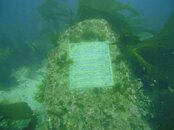Weekend quickie courses have been around for more than 10 years, so the last 5 - 10 years may not be an accurate time frame to consider. Equipment has changed a lot since the early years as well.
To me this poses the real dilemma in instruction. When I finally got certified, our "OW" course (LA County) was three weeks long with regular meetings. It essentially covered "everything" up through basic rescue. At the time there was far less knowledge about SCUBA than today, and less to teach. We didn't use BCDs, SPGs or octos back then so there was indeed a different equipment set to be instructed on. Of course we had to learn to weight ourselves much more accurately because we didn't have BCDs.
Today there is much more to learn, yet the courses are often of the quickie type. One would have to take OW, AOW and Rescue to get approximately the same training we received in OW back in the 60s. Part of the reason the original long courses were cut back and several different courses created was a matter of getting more people initiated into the activity, and not running up the cost of initial entry. This is a marketing strategy that is not IMHO based on good training re: safety. However, a course like the one I took way back then would probably cost $1,200 in today's dollars (actually about the same as mine adjusted for inflation) and be viewed as prohibitive by many divers wanting to try the activity.






